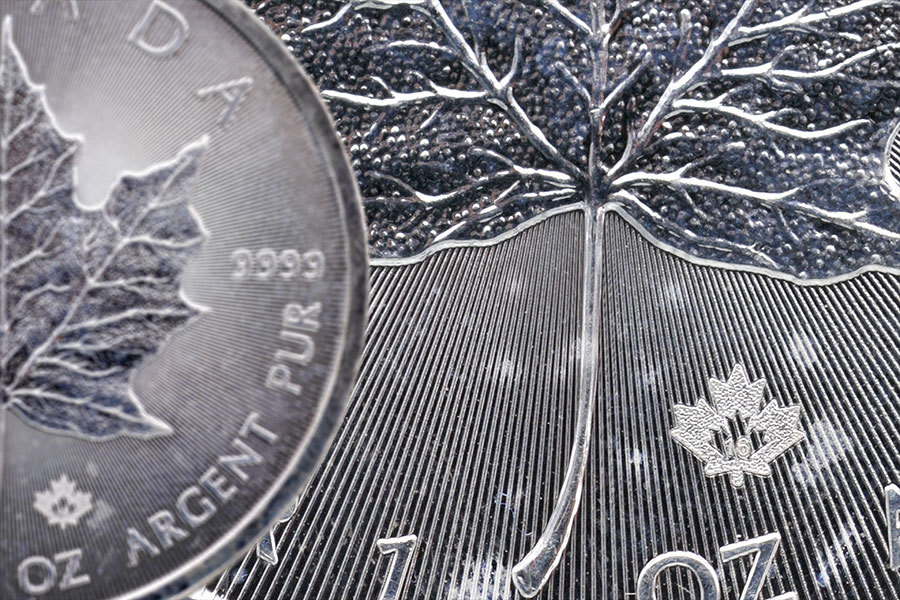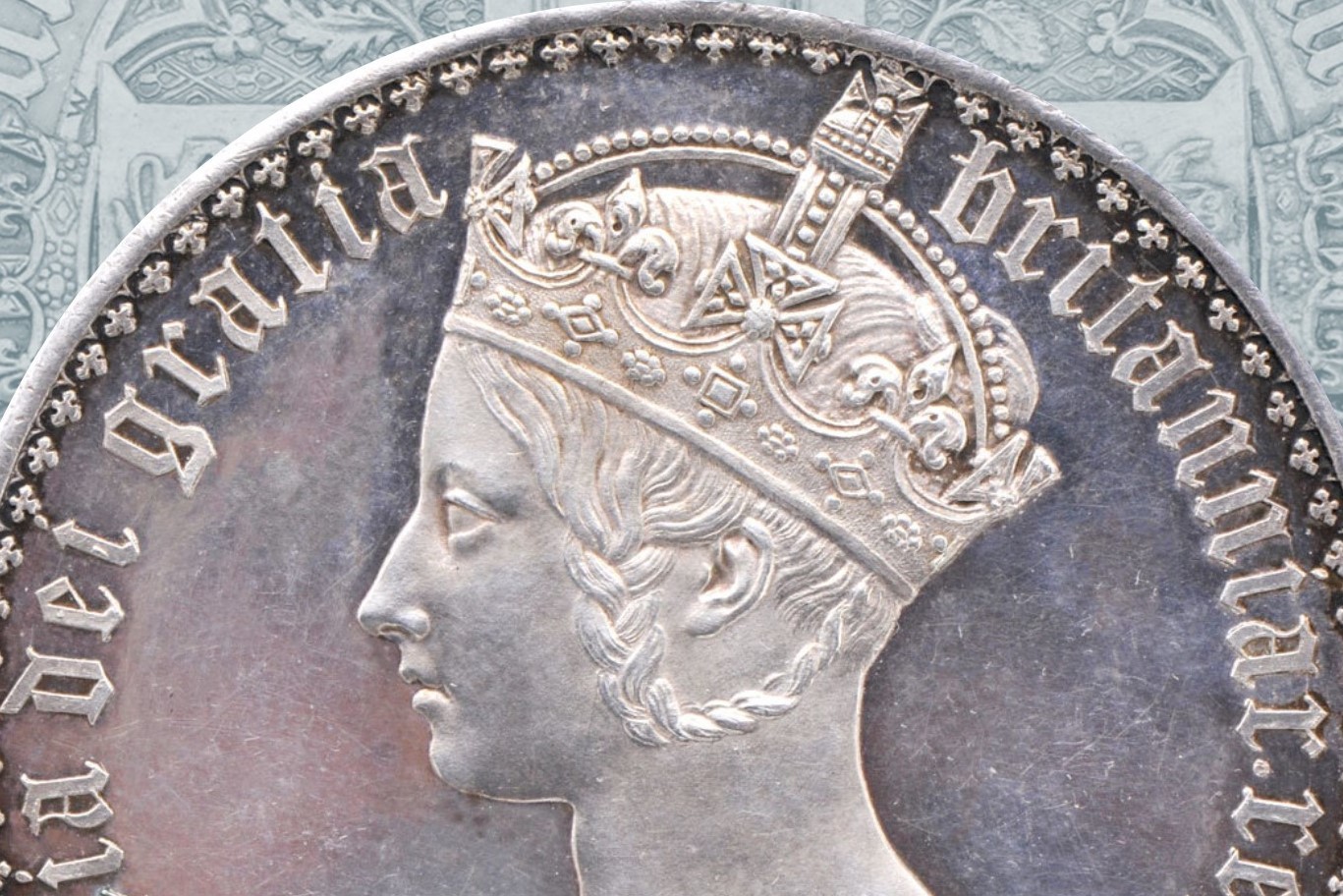
Milk spots are white marks that appear on the surface of silver coins and not easily removed safely. They are a serious concern for numismatic silver coin collectors. How are they caused, what can be done to prevent them, and how will they affect the value of your coin? Read on to find out.
All silver is vulnerable to an imperfection known as white spots. On silver coins these white spots look very much like spilt milk that has dried on the coin, hence the common name given to them by coin collectors - milk spots. They are cloudy, slightly translucent and may occur as small spots or cover large areas of the coin. Perhaps more worrying is that they are fairly common and can suddenly appear on a previously perfect coin.
Where do Milk Spots come from?
Imagine buying an uncirculated silver coin from a mint. It's in encapsulation and you place in it your nice environmentally friendly storage area, then you have a look at it after six months - and it is covered in milk spots! Sadly, this is a real scenario for some collectors. Milk spots can appear days, weeks, months, even years after minting.
The current thought is that milk spots on silver coins are caused by a flaw in the minting process. The silver coin starts life as a flat circular disk known as a blank or planchet. To prevent the silver coin becoming too brittle, the blank is annealed, which is a process of heating and cooling. Prior to annealing, the blank is cleaned/degreased with solvents and it is thought that sometimes not all of the solvent is removed before the coin is heated, baking an imperfection into the surface of the silver.
The coin emerges from the process looking in perfect condition, but with time (between days and years) the imperfection mutates into a white substance, the dreaded milk spots.
Other theories attain that milk spots can be caused by reaction with certain plastics (like PVC) but it may be that these reactions simply accelerate the appearance of the production flaw.
Milk spots are quite common and the problem is not limited to a single mint. Coins affected include Canadian Maples, America Eagles, British Britannias, Chinese Pandas, Silver Krugerrands and many others, including silver bars.
How do Milk Spots affect the value of the coin?
Lets start with the good news. If you have a bullion coin, then the value of your coin is not affected by milk spots. Silver is silver, whether it is covered with white spots or not. It will be weighed in and go in the pot with the rest.
Proof coins are a different matter. Most numismatists want a coin as perfect as they can get it and milk spots are one of the more obvious blemishes. Despite that, many dealers tend to be more tolerant and access the size and position of milk spots and the likelihood of successful removal.
Grading companies usually have a policy on how milk spots affect the grade of a coin, and they often categorise white spots with bag marks, black spots on copper coins and red marks on gold coins. Some will qualify the coin as having white spots or even as environmental deterioration. They also look at the size, number and position of the milk spots. Grade companies do evaluate 'eye appeal' and milk marks are more noticeable on plain surfaces than they are on frosted surfaces.
Note that milk marks can still appear after the coin has been graded and encapsulated, and this will customarily be an exclusion to the grading company guarantee.
Can milk spots be removed?
The real question is can milk spots be removed without damaging the coin? The answer will always lie in the negative as any cleaning of a coin is always detrimental to some extent. Cleaning affects the surface of the coin and there are real dangers that hairlines, micro abrasions or even full scratches will result. Poorly cleaned coins have a habit of 'looking wrong'.
Many professional dealers use some kind of proprietary silver dip or chemical solvent, the sort they use to remove fingerprints and other dirt. This is absolutely fine on bullion coins but there is a risk with proof coins where the highly polished surfaces are more sensitive to change and more easily noticed by a potential buyer. However, many swear by this silver dip technique and you can always go and have a chat with your local dealer and ask what they use.
Another popular yet simple technique is to use a rubber pencil eraser. Start with a new, clean, white soft-rubber eraser and ensure that the coin is free of any grit or debris that may scratch the coin, then firmly rub the affected area on your coin. In some cases the results are quite amazing, and it's a great way to remove fingerprints too. Again, you take the risk of surface damage to the coin but this can be minimal.
Whatever method you may choose, consider that you may make things worse, especially with proofs and other high-value coins. Even professional coin restorers will not guarantee to successfully remove milk spots without damaging or degrading your coin.
How can Milk Spots be Prevented?
Unfortunately, there is no known way for silver collectors to prevent milk spots. You can maybe help matters by using good quality encapsulation, using only plastics that are known to be safe with coins and then storing coins in a friendly environment.
But if a coin has been flawed in the production process, it will still be liable to develop white spots. This moves the onus back to the mint where the coin was produced and there is action and good news coming from that direction.
The Canadian silver maple was one of the coins that was prone to silver spots and the Royal Canadian Mint invested in considerable research into the causes and eradication of the problem, and have been assisted by the collaboration of a local University. The result is what they call MINTSHIELDTM surface protection. Launched in 2018, this process improvement has greatly reduced the occurrence of milk spots in silver Maples.
The White Spot Future
Sooner or later, all mints will develop better quality control and the silver white spot problem will be no more. If Mints don't then they risk losing part of the competitive, but lucrative, commemorative silver proof market.
Maybe in the future Milk spots will become features. Milk spots do show we have authentic silver. When the dealer says "look at the lovely deep tone colour on this patina" you'll get buyers replying "never mind that, have you got any coins with ultra-rare milk spots?". You never know!
Frequently Asked Questions
The most likely cause of milkspots on coins is down to the manufacturing process of the coin. A milkspot occurs when solvent residue is present on the surface of the coin blank, prior to it being annealed.
Bullion coins are simply struck for their silver content, not their numismatic value. Therefore milkspots on bullion coins are of no consequence. Most bullion sellers (including ourselves) do not guarantee against the presence of such surface blemishes on coins sold as such.
We do not recommend you attempt to remove milkspots on silver coins as doing so can do more harm than good.
Professional dealers sometimes use a proprietary silver dip or chemical solvent. Another popular method is to use a rubber pencil eraser.

.jpg)


.jpg)
